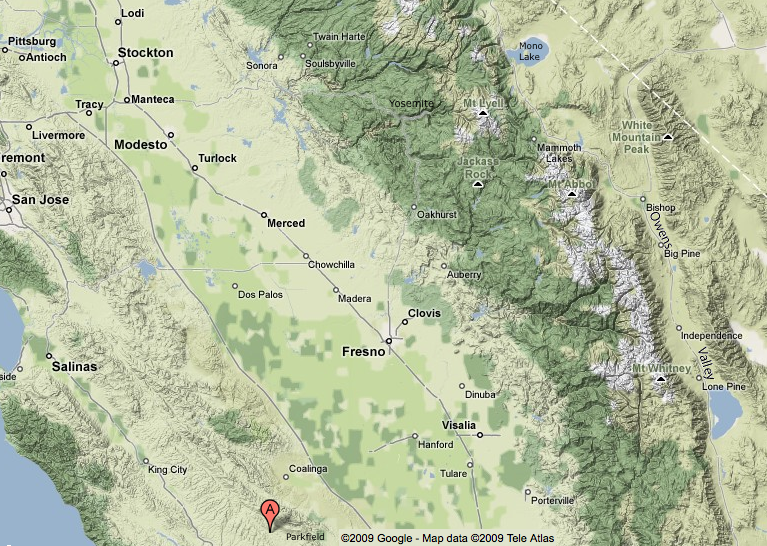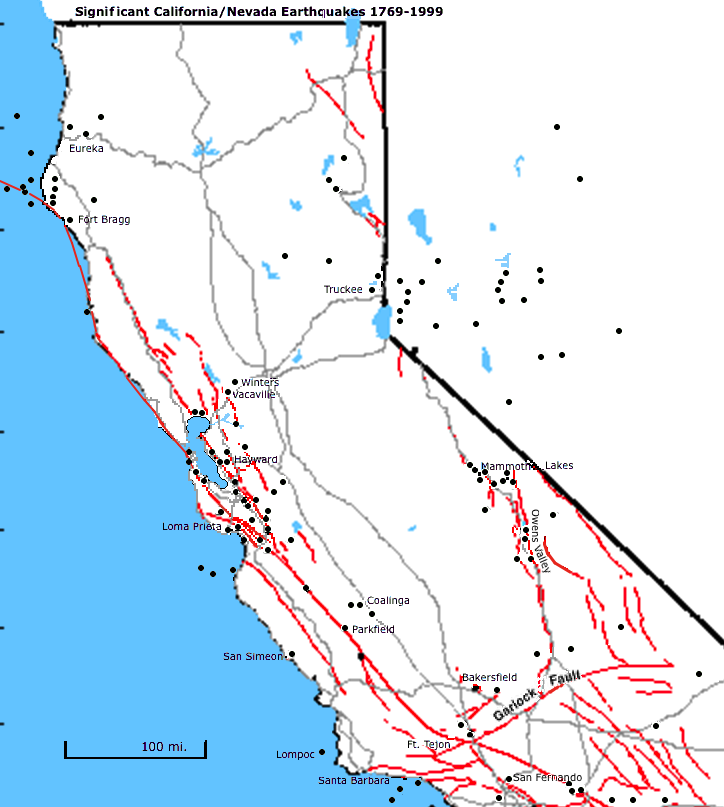 Places
Places
 California
California
 Earthquakes
Earthquakes
 Central Valley and Sierra Nevada Earthquakes
Central Valley and Sierra Nevada Earthquakes
Don's Home
 Places
Places
 California
California
 Earthquakes
Earthquakes
 Central Valley and Sierra Nevada Earthquakes
Central Valley and Sierra Nevada Earthquakes
|
 Google Map
Mono Lake, Mammoth Lakes, Long Valley Geology After the 1980 earathwuakes geoligists discovered that the central part of Long Valley Caldera, a broad depression formed in a cataclysmic volcanic eruption 760,000 years ago, was slowly rising. It is natural to wonder when and where the next volcanic eruption might occur in the Long Valley area. As long as increased volcanic unrest (including earthquake swarms, ground deformation, and CO2 gas emissions) continues in the Long Valley area, the chances of an eruption occurring in the near future will remain somewhat increased. However, evidence from large volcanic areas and calderas worldwide shows that unrest, such as the current activity in eastern California, can persist for decades or even centuries without leading to an eruption. Most likely, the next eruption will be small and similar to previous eruptions along the Mono-Inyo volcanic chain during the past 5,000 years. Such eruptions typically begin with a series of steam-blast explosions as rising molten rock (magma) encounters and vaporizes underground water near the Earth’s surface.
Links:
1983 - Coalinga (Fresno Co.) M6.4 - Nuñez M6.0 Many accounts attribute this to the San Andreas fault, but it was 15-20 miles north-east of Parkfield on the San Andreas fault, which was part of the M7.9 Ft. Tejon quake in 1857.
It was a thrust fault caused by a wedge of rock being pushed up as opposed to a strike slip event common on the San Andreas fault. This fault was previously unknown. A report by Mason Hill says: "It is tentatively attributed here to flexural slip on the flanks of growing folds. This explanation apparently conflicts with the 100-yr-old theory that all tectonic earthquakes are caused by slip on faults. " The quakes did reduce stress on the San Andreas fault according to a S. Toda, R. Stein report.
See Also: NY Timnes Article, May 24, 1983  pasadena.wr.usgs.gov/images/cahist_eqs.gif Return to N. California Earthquakes | |||||||||||||||||||||||||||||||||||||||||||